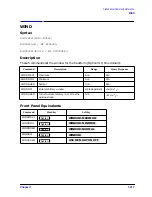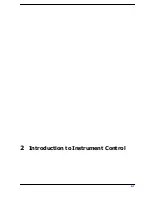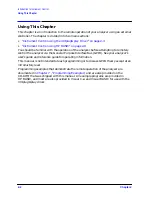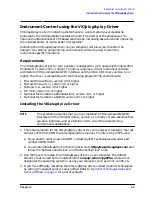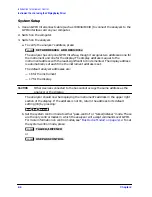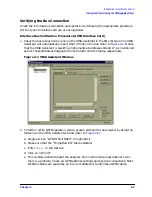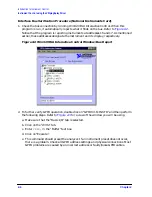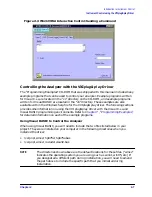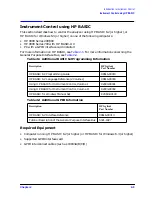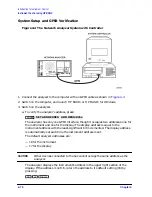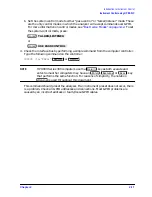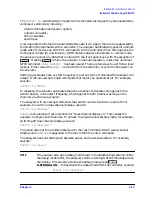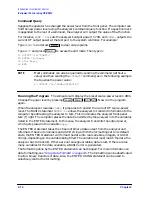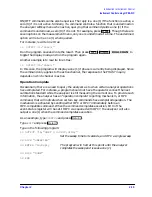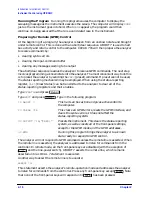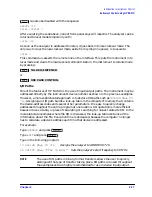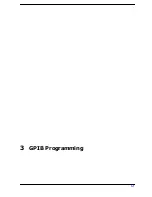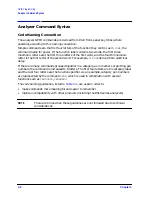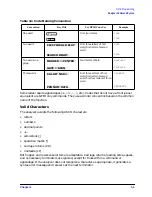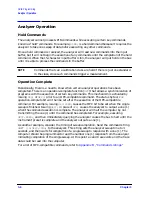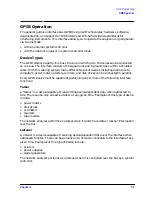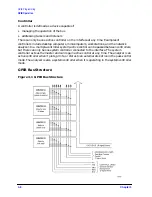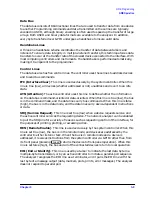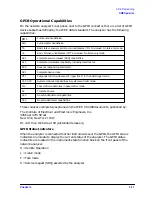
Chapter 2
2-13
Introduction to Instrument Control
Instrument Control using HP BASIC
The
OUTPUT 716;
statement will transmit all items listed (as long as they are separated by
commas or semicolons) including:
literal information enclosed in quotes,
numeric variables,
string variables,
and arrays.
A carriage return/line feed is transmitted after each item. Again, this can be suppressed by
terminating the commands with a semicolon. The analyzer automatically goes into remote
mode when it receives an OUTPUT command from the controller. When this happens, the
front-panel remote (R) and listen (L) GPIB status indicators illuminate. In remote mode,
the analyzer ignores any data that is input with the front-panel keys, with the exception of
. Pressing
returns the analyzer to manual operation, unless the universal
GPIB command
LOCAL LOCKOUT 7
has been issued. There are two ways to exit from a local
lockout. Either issue the
LOCAL 7
command from the controller or cycle the line power on
the analyzer.
Setting a parameter such as start frequency is just one form of command the analyzer will
accept. It will also accept simple commands that require no operand at all. For example,
execute:
OUTPUT 716;"AUTO;"
In response, the analyzer autoscales the active channel. Autoscale only applies to the
active channel, unlike start frequency, which applies to both channels as long as the
channels are stimulus-coupled.
The analyzer will also accept commands that switch various functions on and off. For
example, to switch on dual-channel display, execute:
OUTPUT 716;"DUACON;"
DUACON
is the analyzer root mnemonic for “dual-channel display on.” This causes the
analyzer to display both channels. To go back to single-channel display mode, for example,
switching off dual-channel display, execute:
OUTPUT 716;"DUACOFF;"
The construction of the command starts with the root mnemonic DUAC (dual-channel
display) and
ON
or
OFF
is appended to the root to form the entire command.
The analyzer does not distinguish between upper- and lower-case letters. For example,
execute:
OUTPUT 716;"auto;"
NOTE
The analyzer also has a debug mode to aid in troubleshooting systems. When
the debug mode is ON, the analyzer scrolls incoming GPIB commands across
the display. To manually activate the debug mode, press
. To deactivate the debug mode from the controller, execute:
OUTPUT 716;"DEBUOFF;"
Local
Local
Local
GPIB DIAG ON
Summary of Contents for 8719ES
Page 15: ...1 1 1 Alphabetical Command Reference ...
Page 293: ...2 1 2 Introduction to Instrument Control ...
Page 310: ...3 1 3 GPIB Programming ...
Page 334: ...4 1 4 Reading Analyzer Data ...
Page 343: ...5 1 5 Data Processing Chain ...
Page 350: ...6 1 6 Error Reporting ...
Page 364: ...7 1 7 Programming Examples ...
Page 502: ...A 1 A Preset Conditions ...
Page 517: ...B 1 B Command Listings ...

